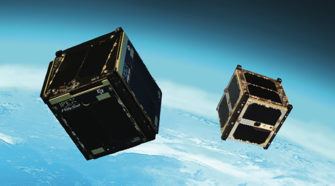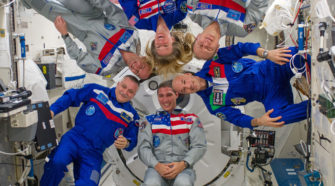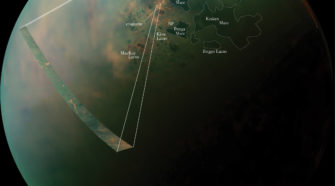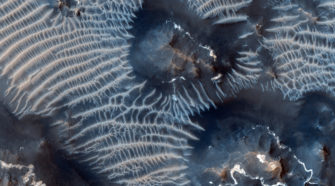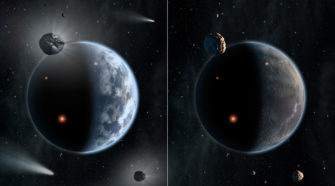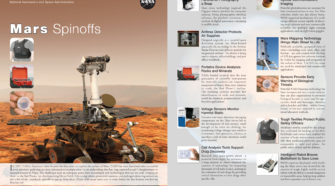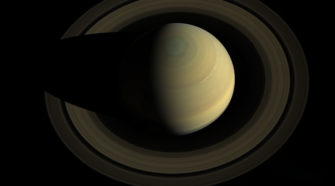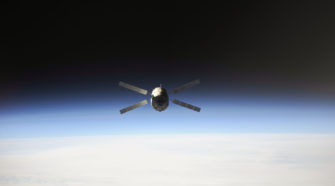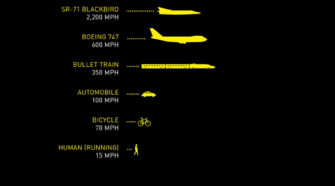CubeSats: Thinking inside the box, launching into space
Two tiny, cube-shaped research satellites hitched a ride to Earth orbit to validate new hardware and software technologies for future NASA Earth-observing instruments. The cube satellites, or “CubeSats,” which typically have a volume of exactly 1 liter, were launched on a United Launch Alliance Atlas V rocket on the night of Dec. 5, 2013 from …
‘Witch head’ brews baby stars
A witch appears to be screaming out into space in this image from NASA’s Wide-Field Infrared Survey Explorer, or WISE. The infrared portrait shows the Witch Head nebula, named after its resemblance to the profile of a wicked witch. Astronomers say the billowy clouds of the nebula, where baby stars are brewing, are being lit up …
Tweeting from the ISS
Astronaut Karen Nyberg (@AstroKarenN) posted this photo on Oct. 28 along with the following on twitter: W/ departure of #ATV4, aft docking port empty. We move our Soyuz there Fri making room for @AstroRM & @Astro_Wakata pic.twitter.com/lpatsjbAoA. Two days later she followed that with another tweet: Up early to suit up, get in Soyuz, undock …
Titan’s northern lakes resemble Earth’s salt flats
With the sun now shining down over the north pole of Saturn’s moon Titan, a little luck with the weather, and trajectories that put the spacecraft into optimal viewing positions, NASA’s Cassini spacecraft has obtained new pictures of the liquid methane and ethane seas and lakes that reside near Titan’s north pole. The images reveal …
Generations of windblown sediments on Mars
This colorful scene is situated in the Noctis Labyrinthus region of Mars, perched high on the Tharsis rise in the upper reaches of the Valles Marineris canyon system. Targeting the bright rimmed bedrock knobs, the image also captures the interaction of two distinct types of windblown sediments. Surrounding the bedrock knobs is a network of …
Planets rich in carbon may be waterless worlds
Planets rich in carbon, including so-called diamond planets, may lack oceans, according to NASA-funded theoretical research. Our sun is a carbon-poor star, and as result, our planet Earth is made up largely of silicates, not carbon. Stars with much more carbon than the sun, on the other hand, are predicted to make planets chock full …
NASA Spinoffs from Mars exploration
In 1997, NASA’s Sojourner robot became the first rover to explore the surface of Mars. NASA has since launched other successful rover missions, gathering precious information in preparation for an undertaking that has long captured people’s imaginations—a manned mission to Mars. The challenges such an enterprise poses have necessitated new technologies that are not only …
Cassini swings high above Saturn to take a portrait
It’s a view as good as gold. A loop high above Saturn by NASA’s Cassini spacecraft revealed this stately view of the golden-hued planet and its main rings. The observation and resulting image mosaic were planned as one of three images for Cassini’s 2013 Scientist for a Day essay contest. The contest challenges students to …
Fiery end for ESA’s ATV Albert Einstein
ESA’s fourth Automated Transfer Vehicle cargo ferry, Albert Einstein, completed its five-month mission to the International Space Station by reentering the atmosphere today and burning up safely over an uninhabited area of the southern Pacific Ocean. Automated Transfer Vehicles (ATVs) are the most complex space vehicles ever developed in Europe and are the largest and …
How fast can Juno go?
When arriving at Jupiter, the planet’s gravity pulls in Juno faster and faster until the spacecraft reaches a speed of over 250,000 kilometers per hour (150,000 miles per hour) with respect to Earth – making it one of the fastest human-made objects ever. When it arrives at Jupiter, it slams on the brakes, firing its main engine in …

